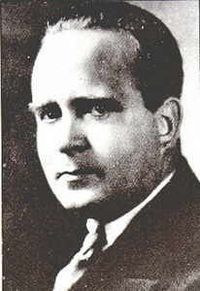Juan de la Cierva
Juan de la Cierva y Codorníu, 1st Count of De La Cierva (Spanish pronunciation: [ˈxwan de la ˈθjerβa i koðorˈni.u]; Murcia, Spain 21 September 1895 – Croydon, United Kingdom 9 December 1936) was a Spanish civil engineer, pilot and aeronautical engineer. His most famous accomplishment was the invention in 1920 of the Autogiro, a single-rotor type of aircraft that came to be called autogyro in the English language. In 1923, after four years of experimentation, De la Cierva developed the articulated rotor, which resulted in the world's first successful flight of a stable rotary-wing aircraft, with his C.4 prototype.De la Cierva was born in Murcia, Spain to a wealthy family. After several successful experiments with aviation as a boy, he eventually earned a civil engineering degree. He moved to the United Kingdom in 1925 where, with the support of Scottish industrialist James G. Weir, he established the Cierva Autogiro Company.At the outbreak of the Spanish Civil War, De la Cierva supported the National forces, helping the rebels to obtain the De Havilland DH-89 'Dragon Rapide' which flew General Franco from the Canary Islands to Spanish Morocco. His brother was killed by the Republican army in Paracuellos del Jarama.
Personal facts

| Alias (AKA) | De La Cierva Cornodíu Juan; De La Cierva y Cornodíu Juan |
|---|---|
| Birth date | September 21, 1895 |
| Birth place | |
| Nationality | |
| Date of death | December 09, 1936 |
| Place of death | |
| Resting place | |
| Known for |
Search
Juan de la Cierva on Wikipedia
External resources
- http://books.google.com/books?id=ueQDAAAAMBAJ&pg=RA10-PA34&dq=Popular+Science+1935+plane+%22Popular+Mechanics%22&hl=en&ei=Mps3Ts_RNKL_sQLdiN0q&sa=X&oi=book_result&ct=result&resnum=7&ved=0CEEQ6AEwBjgK#v=onepage&q&f=true
- http://www.centennialofflight.net/essay/Dictionary/cierva/DI17.htm
- http://www.gyroplanepassion.com/Juan_de_la_Cierva.html
- http://www.hofstra.edu/pdf/about/administration/provost/hofhrz/hofhrz_f02_charnov.pdf
- http://www.sagpa.co.za/wnewsdisp.php?id=6886